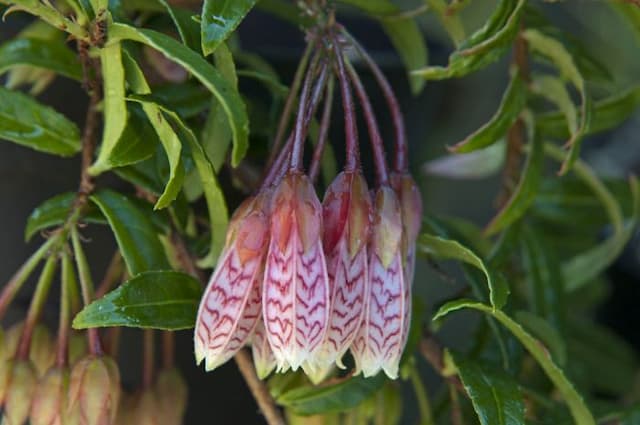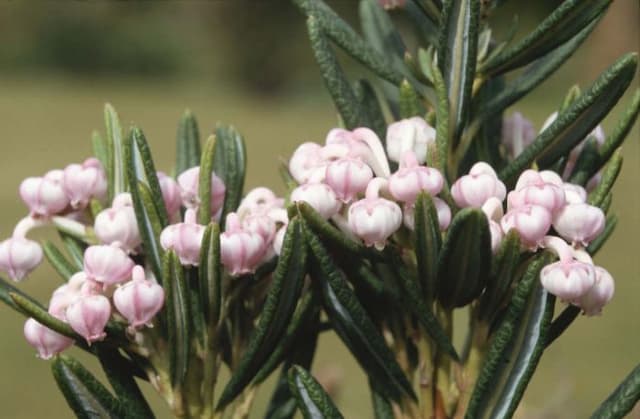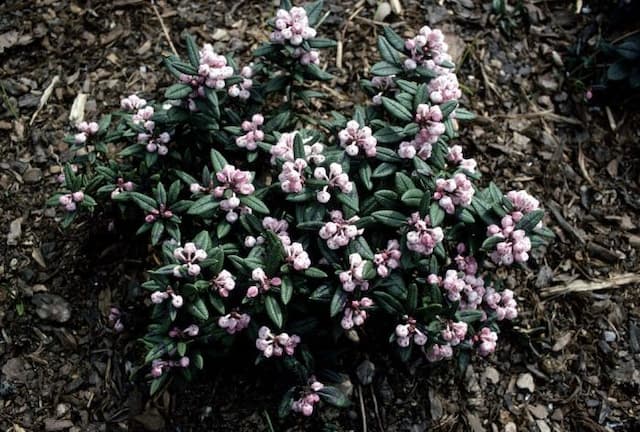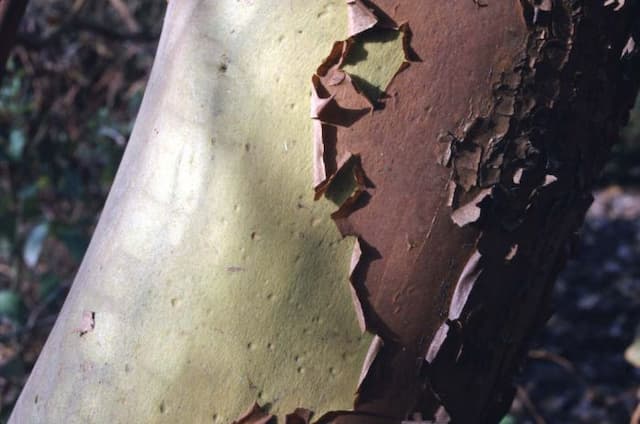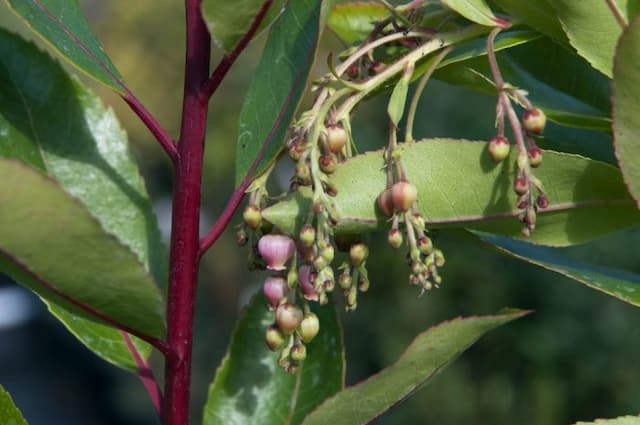Rhododendron Rhododendron 'Hydon Dawn'
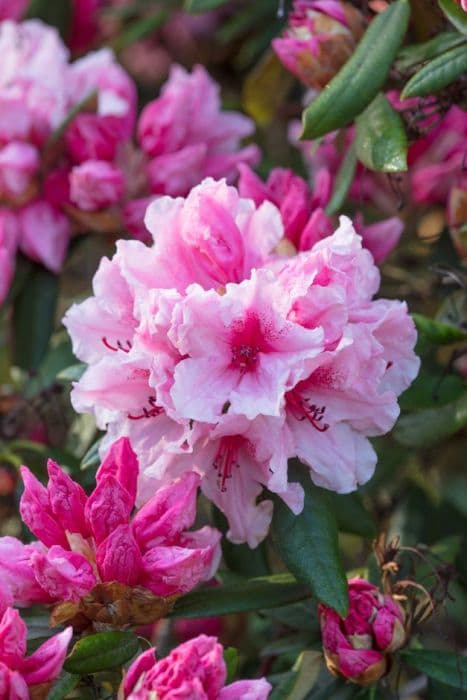
ABOUT
The Rhododendron 'Hydon Dawn' is a captivating shrub distinguished by its lush, evergreen foliage and stunning floral display. Its leaves are leathery to the touch and a rich green color, providing a year-round visual interest. The plant's most striking feature is its beautiful flowers which bloom in clusters known as trusses. Each truss is composed of multiple bell-shaped flowers that can range in color from soft pink to white with hints of purple. These blossoms exude a delicate fragrance that can be quite enchanting in the springtime when they are in full bloom. With its dazzling flowers and dense greenery, the 'Hydon Dawn' is a popular choice for adding a touch of elegance to gardens and landscapes.
About this plant
 Names
NamesFamily
Ericaceae.
Synonyms
Hydon Dawn Rhododendron, Rhododendron 'Hydon Dawn'.
Common names
Rhododendron 'Hydon Dawn'
 Toxicity
ToxicityTo humans
Rhododendron, including the 'Hydon Dawn' variety, is known to be toxic to humans if any part of the plant is ingested. The plant contains grayanotoxins, which can cause poisoning. Symptoms of rhododendron poisoning can include vomiting, diarrhea, drooling, weakness, confusion, seizures, and in severe cases, cardiac problems such as irregular heartbeats or lowered blood pressure. The ingestion of rhododendron may lead to serious health complications and, in extreme cases, could be fatal.
To pets
Rhododendron is also toxic to pets, with the 'Hydon Dawn' variety being no exception. The toxicity is due to the presence of grayanotoxins. If pets consume any part of the plant, they may exhibit symptoms such as vomiting, diarrhea, hypersalivation, weakness, coma, hypotension, central nervous system depression, and, in severe cases, death. Early veterinary intervention is crucial to manage rhododendron poisoning in pets.
 Characteristics
CharacteristicsLife cycle
Perennials
Foliage type
Evergreen
Color of leaves
Green
Flower color
Pink
Height
4 feet [1.22 meters]
Spread
4 feet [1.22 meters]
Plant type
Shrub
Hardiness zones
7
Native area
Asia
Benefits
 General Benefits
General Benefits- Attractive blooms: Rhododendron 'Hydon Dawn' produces beautiful, showy flowers that enhance the aesthetic appeal of gardens and landscapes.
- Durability: This variety is known for its hardiness, able to withstand cold temperatures and resist common diseases that affect other rhododendrons.
- Low maintenance: Once established, Rhododendron 'Hydon Dawn' requires minimal care, making it suitable for gardeners of all levels.
- Bee-friendly: The flowers attract pollinators such as bees, which are beneficial for the health of the garden and the broader ecosystem.
- Long flowering period: It offers a long season of bloom from late spring to early summer, providing color and interest over an extended period.
- Versatility: This plant is versatile and can be used in various landscape designs, from woodland gardens to formal borders.
- Tolerance of shade: It can thrive in partial shade, making it a good choice for under-canopied areas or north-facing gardens.
 Medical Properties
Medical PropertiesThis plant is not used for medical purposes.
 Air-purifying Qualities
Air-purifying QualitiesThis plant is not specifically known for air purifying qualities.
 Other Uses
Other Uses- Culinary Garnish: The blooms of the Rhododendron 'Hydon Dawn' can be used as an edible garnish to add a splash of color to salads and desserts, but it’s crucial to ensure they are free of pesticides and non-toxic.
- Dye Production: Its flowers, when processed properly, can be used to produce natural dyes for fabrics or crafts, adding a pinkish hue to materials.
- Photography Subject: The vibrant flowers of the Rhododendron 'Hydon Dawn' serve as an excellent subject for photographers and botanical artists looking to capture their unique beauty.
- Education and Research: Students and botanists can use this plant as a case study to understand hybrid plant varieties and their growth requirements in different habitats.
- Erosion Control: When planted on slopes, Rhododendron 'Hydon Dawn' can help in preventing soil erosion due to its root system spreading across the surface layer of the soil.
- Perfumery: Occasionally, the essence or fragrance of the flowers might be used in the creation of perfumes or natural scent products, but always with careful extraction methods.
- Theme Gardens: It can be utilized in creating specific garden themes that focus on pink flowering plants or heathland environments.
- Scented Gardens: Gardens designed to be particularly fragrant may include the Rhododendron 'Hydon Dawn' as one of their sensory plants.
- Hedge Formation: The dense growth habit of this rhododendron makes it suitable for forming decorative hedges or privacy screens in gardens.
- Seasonal Celebrations: Its springtime blooms make it a popular choice for incorporating into floral displays for events and celebrations that occur in the spring season.
Interesting Facts
 Feng Shui
Feng ShuiThe Rhododendron is not used in Feng Shui practice.
 Zodiac Sign Compitability
Zodiac Sign CompitabilityThe Rhododendron is not used in astrology practice.
 Plant Symbolism
Plant Symbolism- Beware: Rhododendrons in general have been associated with caution or danger due to the fact that many species contain toxic substances.
- Elegance: The Rhododendron flower exudes an elegant appearance with its lush blooms and grandeur, making it a symbol of sophistication and refined beauty.
- Wealth: With their full, vibrant blooms, Rhododendrons can symbolize prosperity and an abundance of beauty or resources, akin to wealth.
- Passion: The intensity of the blooms and the variety of colors can reflect the fiery intensity of passion and strong emotions.
- Rebirth: Blooming in spring, Rhododendrons can symbolize new beginnings, growth, and rejuvenation.
 Water
WaterRhododendrons, including the Hydon Dawn variety, should be watered thoroughly when the top inch of soil begins to feel dry to the touch. This typically translates to about once a week, but the frequency may vary depending on climate and weather conditions. Always check the soil moisture before watering. Rhododendrons prefer a deep watering, which means you should provide enough water to soak the root zone. For an average-sized shrub, this might mean using around 2 gallons of water per week during the growing season, and less during the dormant winter months.
 Light
LightThe Hydon Dawn rhododendron thrives best in partial shade to filtered sunlight. An ideal spot is where it can receive morning sunlight and be protected from the harsh afternoon sun. Ensure the plant is placed in a location that simulates a woodland environment with dappled light for optimal growth and blooming.
 Temperature
TemperatureRhododendrons, including the 'Hydon Dawn,' can generally tolerate a range of temperatures and are hardy in USDA zones 5 to 8. The plant can survive minimum temperatures of -20 to -10 degrees Fahrenheit but thrives best in temperate conditions. The ideal temperature range for this rhododendron is between 50 and 70 degrees Fahrenheit.
 Pruning
PruningPrune the Hydon Dawn rhododendron after it has finished blooming in the spring to maintain its shape and encourage bushier growth. Pruning is also the time to remove dead or diseased wood. Regular pruning is not required but doing so yearly will help to stimulate rejuvenation and improve air circulation within the plant.
 Cleaning
CleaningAs needed
 Soil
SoilRhododendrons, including 'Hydon Dawn', thrive in acidic soil with a pH of 4.5-6.0. The ideal soil mix consists of 1/3 peat moss, 1/3 pine bark, and 1/3 coarse sand or perlite for good drainage. Using this mix ensures proper root aeration and prevents waterlogging, vital for the health of the plant.
 Repotting
Repotting'Hydon Dawn' Rhododendrons typically need repotting every 2 to 3 years or when they become root-bound. It's best to repot in early spring before the growing season starts, using an acidic soil mix suitable for rhododendrons.
 Humidity & Misting
Humidity & MistingRhododendron 'Hydon Dawn' prefers moderate to high humidity levels, around 50-60%. It is crucial to maintain consistent humidity, especially during the dry winter months, to mimic its natural humid habitat conditions.
 Suitable locations
Suitable locationsIndoor
Place 'Hydon Dawn' in well-lit room, avoid direct sunlight, keep soil moist.
Outdoor
Plant 'Hydon Dawn' in partial shade, ensure acidic soil, mulch well.
Hardiness zone
5-8 USDA
 Life cycle
Life cycleRhododendron 'Hydon Dawn' begins its life cycle when a seed germinates, typically in cool, moist, well-drained soil conditions similar to its native habitat. Upon germination, the seedling develops a root system and foliage, becoming a juvenile plant. As it matures, the plant enters a vegetative state characterized by the growth of leaves, stems, and roots, preparing for the next stage of flowering. Flowering occurs usually in spring, with 'Hydon Dawn' producing showy pink blossoms that attract pollinators for sexual reproduction. After pollination, the flowers produce seed capsules that eventually release seeds, continuing the cycle. The plant then enters a period of dormancy in the winter, where growth slows down significantly until conditions become favorable again in the spring.
 Propogation
PropogationPropogation time
Late Winter to Early Spring
The Rhododendron 'Hydon Dawn', commonly known as Hydon Dawn Rhododendron, can be propagated through semi-hardwood cuttings. The best time for this method is in the late summer after blooming has ceased and the new growth has begun to mature and harden. To propagate, take a cutting of about 4 to 6 inches (10 to 15 centimeters) from a healthy stem, making sure it includes at least two sets of leaves. Remove the lower leaves to expose a clear section of stem, which can then be dipped in rooting hormone to encourage root growth. The cutting should be planted in a mixture of peat and perlite and kept in a humid environment with indirect light until roots have developed, which typically takes a few weeks to a few months. Once rooted, the new Hydon Dawn Rhododendron can be transplanted into a larger pot or directly into the garden.
